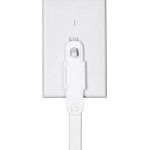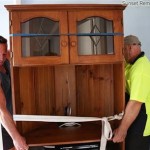How To Remove a Scratch From Wood Furniture
Wood furniture, prized for its aesthetic appeal and durability, is unfortunately susceptible to scratches. These blemishes can range from minor surface abrasions to deeper, more noticeable gouges. Understanding the type of scratch and employing the appropriate removal technique are crucial for restoring the furniture's original appearance and preserving its value. This article provides a comprehensive guide to identifying scratch types and outlining effective methods for their removal.
Before commencing any scratch removal process, it is imperative to assess the type and severity of the damage. This evaluation dictates the chosen method and the necessary materials. Scratches can generally be categorized into three levels of severity: surface scratches, which only affect the finish; shallow scratches, which penetrate the finish and slightly affect the wood; and deep scratches, which extend significantly into the wood itself.
Identifying the Scratch Type
The initial step in scratch removal is accurately identifying the nature of the damage. A surface scratch typically appears as a light, hazy mark on the furniture's surface without revealing the wood underneath. Shallow scratches are visible even when viewed from various angles and may slightly expose the wood. Deep scratches, on the other hand, are readily apparent and often leave a noticeable indentation in the wood's surface.
To differentiate between these scratch types, one can gently run a fingernail across the affected area. If the fingernail catches only slightly or not at all, it's likely a surface scratch. If the fingernail catches noticeably but doesn't sink deeply, it indicates a shallow scratch. A deep scratch will cause the fingernail to catch significantly and may expose the raw wood beneath the finish.
Furthermore, consider the finish of the furniture. Some finishes, like lacquer or varnish, are relatively hard and prone to surface scratches. Others, such as oil finishes, are more absorbent and might exhibit shallow scratches more readily. Understanding the finish type helps in selecting the appropriate repair method and the corresponding product. Gathering information about the finish will also help in matching the color and sheen of the repair materials. This could include checking the manufacturer's information attached to the furniture or contacting a professional furniture restorer, if needed.
Surface Scratch Removal Techniques
Surface scratches, being the least severe, can often be addressed with simple household items and minimal effort. The goal is to gently buff or polish the affected area, blending the scratch with the surrounding finish. Several methods can be employed for this purpose.
One common approach is using a scratch concealer stick or marker. These products are available in various shades to match different wood finishes. To use, carefully apply the concealer to the scratch, filling it in evenly. Wipe away any excess with a soft, clean cloth, following the direction of the wood grain. This method effectively camouflages minor scratches by adding pigment to the damaged area, making them less noticeable.
Another effective technique involves using a paste made from olive oil and vinegar. Mix equal parts of olive oil and white vinegar to create a gentle polishing solution. Apply a small amount of the mixture to a soft cloth and gently buff the scratch in a circular motion. The olive oil helps to lubricate the surface and reduce friction, while the vinegar acts as a mild abrasive, helping to blend the scratch. Wipe away any excess mixture with a clean cloth. This method works best on newer scratches and lighter finishes.
Alternatively, a furniture polish containing beeswax can be used to address surface scratches. Beeswax fills in the scratch, creating a smooth, even surface. Apply the polish to the area and buff it with a soft cloth until the scratch is less visible. Beeswax also provides a protective layer, helping to prevent future scratches. It is important to test any product in an inconspicuous area before applying it to the entire surface to ensure it does not discolor or damage the finish.
Addressing Shallow and Deep Scratches
Shallow and deep scratches require more involved repair methods, as they penetrate beyond the surface finish. These techniques typically involve filling the scratch with a wood filler or putty and then refinishing the area to match the existing finish. Achieving a seamless repair requires careful color matching and blending.
For shallow scratches, a wood filler pen or wax filler stick can be utilized. These products are designed to fill in the scratch and blend with the wood's natural color. Select a filler that closely matches the wood's color. Apply the filler to the scratch, pressing it firmly into the groove. Remove any excess filler with a plastic putty knife or a clean cloth. Allow the filler to dry completely according to the manufacturer's instructions. Once dry, lightly sand the filled area with fine-grit sandpaper (220-grit or higher) to create a smooth, even surface. Follow this by applying a touch-up finish or polish to the repaired area, blending it with the surrounding finish.
Deep scratches, which extend significantly into the wood, demand a more robust filling material. A paste wood filler is suitable for this type of repair. Begin by cleaning the scratch and roughening the area slightly with sandpaper to provide better adhesion for the filler. Apply the paste wood filler liberally to the scratch, overfilling it slightly. Use a putty knife to press the filler firmly into the scratch and remove any excess. Allow the filler to dry completely, which may take several hours or even overnight. Once the filler is completely dry, sand the area carefully with fine-grit sandpaper (220-grit or higher) until it is flush with the surrounding surface. Progress to finer grits of sandpaper (400-grit or higher) for the final smoothing. Finally, apply a touch-up finish or varnish to match the surrounding surface, ensuring the color and sheen blend seamlessly.
For both shallow and deep scratches, selecting a filler that matches the wood species and stain is crucial for a successful repair. Wood fillers are available in various colors and can also be tinted to achieve a perfect match. When refinishing, it’s important to apply thin, even coats of finish, allowing each coat to dry completely before applying the next. Multiple thin coats generally produce a better result than one thick coat. Following the grain of the wood when sanding and applying finish ensures a more natural-looking repair.
In some cases, especially with antique or valuable furniture, it may be best to consult a professional furniture restorer. A professional has the expertise and tools to handle complex repairs and ensure the integrity of the furniture is preserved. They can also provide advice on preventing future scratches and maintaining the furniture's beauty.
Preventing scratches in the first place is always preferable to repairing them. Simple measures like using furniture pads, coasters, and tablecloths can significantly reduce the risk of surface damage. Regular dusting and cleaning with a soft cloth can also help prevent the buildup of abrasive particles that can cause scratches. Being mindful of sharp objects and potential sources of impact can further protect your wood furniture from scratches. Thoughtful placement of furniture and consideration of traffic patterns within a room can also minimize the chance of accidental damage.

5 Easy Ways To Fix Scratched Furniture

Tested 5 Ways To Remove Scratches From Wood Furniture A Butterfly House

4 Steps To Fixed Scratched Furniture Repair

3 Simple Ways To Fix Deep Scratches In Wood Wikihow

How To Fix Scratches In Your Wood Table

Wood Scratch Repair How To Remove Scratches From Artisan Born

6 Proven Ways To Remove Scratches From Wood Furniture

How To Repair And Conceal Furniture Scratches Needlepointers Com

Fix Wood Scratches With Walnuts The Family Handyman

Easy Fix For Scratched Teak The Boat Galley








